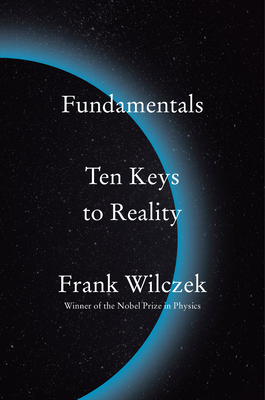What do you think?
Rate this book


272 pages, Hardcover
First published January 1, 2021
A human being is part of a whole, called by us the ‘Universe’ —a part limited in time and space. He experiences himself, his thoughts, and feelings, as something separated from the rest—a kind of optical delusion of his consciousness. This delusion is a kind of prison for us, restricting us to our personal desires and to affection for a few persons nearest us. Our task must be to free ourselves from this prison by widening our circles of compassion to embrace all living creatures and the whole of nature in its beauty.
This is a book about fundamental lessons we can learn from a study of the physical world...To me, those fundamental lessons include much more than bare facts about how the physical world works. Those facts are both powerful and strangely beautiful, to be sure. But the style of thought that allowed us to discover them is a great achievement, too. And it’s important to consider what those fundamentals suggest about how we humans fit into the big picture.
The complementarity between humility and self-respect is, I believe, the central message of our fundamentals. It recurs as a theme in many variations. The vastness of space dwarfs us, but we contain multitudes of neurons, and, of course, vastly more of the atoms that make up neurons. The span of cosmic history far exceeds a human lifetime, but we have time for immense numbers of thoughts. Cosmic energies transcend what a human commands, but we have ample power to sculpt our local environment and to participate actively in life among other humans. The world is complex beyond our ability to grasp, and rich in mysteries, but we know a lot, and are learning more. Humility is in order, but so is self-respect.
According to our present best understanding, the primary properties of matter, from which all other properties can be derived, are these three:
Mass Charge Spin
That’s it. From a philosophical perspective, the key takeaways are that there are very few primary properties, and that they are things you can define and measure precisely. And also this: As Democritus anticipated, the connection of the primary properties — the deep structure of reality — to the everyday appearance of things is quite remote. While it seems to me too strong to say that sweet, bitter, hot, cold, and color are “conventions”, it is surely true that it takes quite some doing to trace those things — and the world of everyday experience more generally — to their origins in mass, charge, and spin.
From forces we are led to fields, and from (quantum) fields, we are led to particles. From particles we are led to (quantum) fields, and from fields, we are led to forces. Thus, we come to understand that substance and force are two aspects of a common underlying reality.
Many once mysterious aspects of living things, such as how they derive their energy (metabolism), how they reproduce (heredity), and how they sense their environment (perception), (can now be understood) from the bottom up. For now we understand in considerable detail, how molecules — and ultimately, quarks, gluons, electrons, and photons — manage to accomplish those feats. They are complicated things that matter can do, by following the laws of physics. No more, and no less. These understandings do not subtract from the glory of life. Rather, they magnify the glory of matter.
Matter, deeply understood, has ample room for minds. And so, also, it can be home to the internal worlds that minds house. There is both majestic simplicity and strange beauty in this unified view of the world. Within it, we must consider ourselves not as unique objects (“souls”), outside of the physical world, but rather as coherent, dynamic patterns in matter. It is an unfamiliar perspective. Were it not so strongly supported by the fundamentals of science, it would seem far-fetched. But it has the virtue of truth. And once embraced, it can come to seem liberating.
A special quality of humans, not shared by evolution or, as yet, by machines, is our ability to recognize gaps in our understanding and to take joy in the process of filling them in. It is a beautiful thing to experience the mysterious, and powerful, too.
The misery or evil of immortality is a common theme in myth and literature. The intended lesson: When it comes to longevity, be careful what you wish for. Frankly, I think this is sour grapes. The destruction of memory and learning by death is horrifying and wasteful. Extending the healthful human lifespan should be one of the main goals of science.
There is a quantity, usually written as t, which appears in our fundamental description of how change takes place in the physical world. It is also what people are talking about when they ask, “What time is it?” That is what time is. Time is what clocks measure, and everything that changes is a clock.